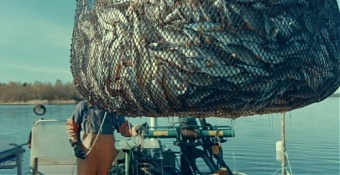Estonia, EU – Baltic States, Forum, Legislation, Markets and Companies
International Internet Magazine. Baltic States news & analytics
Friday, 26.04.2024, 03:02
Baltic herring harvesting quota in open waters of Baltic Sea to be cut by 36%
 Print version
Print version |
|---|
On Tuesday, two days of negotiations on Baltic Sea fish harvesting quotas between the countries bordering on the Baltic Sea came to an end. The negotiations focused on the fishing quotas for 2021 and ways to protect the harbor porpoise population present in the Baltic Sea, spokespeople for the Estonian Ministry of the Environment said.
The negotiations were chaired by Estonia as the current chairman of BALTFISH.
Kaire Martin, adviser at the fish stocks department of the Estonian Ministry of the Environment, said that while the harvesting of Baltic herring in the open waters of the Baltic Sea will be cut next year, the Baltic herring quota for the Gulf of Riga will rise by 15%.
It is also possible to raise the quota for sprat catches by up to 6%.
Also the salmon harvesting quota for the open waters of the Baltic Sea may rise a bit, whereas the salmon harvesting quota for the Gulf of Finland is set to decline. The quota for the open waters will rise as attempts at putting an end to illegal fishing in the southern part of the Baltic Sea have been successful.
The reduction in the quota for the Gulf of Finland is a result of an increase in discards, which are deducted from the quota.
The fish species in the most difficult situation in the Baltic Sea are cod, and Baltic herring in the western part of the sea, whose stocks are at a low. The Baltic Sea environment is no longer suited for cod populations both due to salt levels and pollution.
The harbor porpoise population in the Baltic Sea is extremely endangered, with fewer than 500 of the animals left in the entire Baltic. Therefore, marine scientists have come up with their recommendations for the protection of that species. The recommendations include, among other things, the introduction of net fishing prohibition zones in areas where harbor porpoise populations live.
In addition, a proposal has been voiced to equip fishing nets in the entire Baltic Sea, including in areas where few harbor porpoises live, such as in the waters of Estonia, with deterrents to prevent the marine mammals from ending up in fishing nets.
"In our opinion it's very disproportionate to install deterrents just in case also in places where harbor porpoises can be found extremely seldom. Estonia's aim as the presidency is to come up with recommendations which focus on the main habitats of harbor porpoise," Martin said.
BALTFISH is a regional organization of fishing managers that brings together representatives of the Baltic Sea states and interest groups. Estonia is the chairman of BALTFISH from July 1 this year to the beginning of July 2021.
The next meeting of BALTFISH is scheduled to take place in October, immediately before the meeting of the EU Agriculture and Fisheries Council.
- 28.01.2022 BONO aims at a billion!
- 26.08.2021 LLC Dizozols Investments finalizes investment attraction deal with Crowdestor with record-high profits
- 30.12.2020 Накануне 25-летия Балтийский курс/The Baltic Course уходит с рынка деловых СМИ
- 30.12.2020 On the verge of its 25th anniversary, The Baltic Course leaves business media market
- 30.12.2020 Business Education Plus предлагает анонсы бизнес-обучений в январе-феврале 2021 года
- 30.12.2020 Hotels showing strong interest in providing self-isolation service
- 30.12.2020 EU to buy additional 100 mln doses of coronavirus vaccine
- 30.12.2020 ЕС закупит 100 млн. дополнительных доз вакцины Biontech и Pfizer
- 29.12.2020 В Rietumu и в этот раз создали особые праздничные открытки и календари 2021
- 29.12.2020 Latvia to impose curfew, state of emergency to be extended until February 7








 «The Baltic Course» Is Sold and Stays in Business!
«The Baltic Course» Is Sold and Stays in Business!

